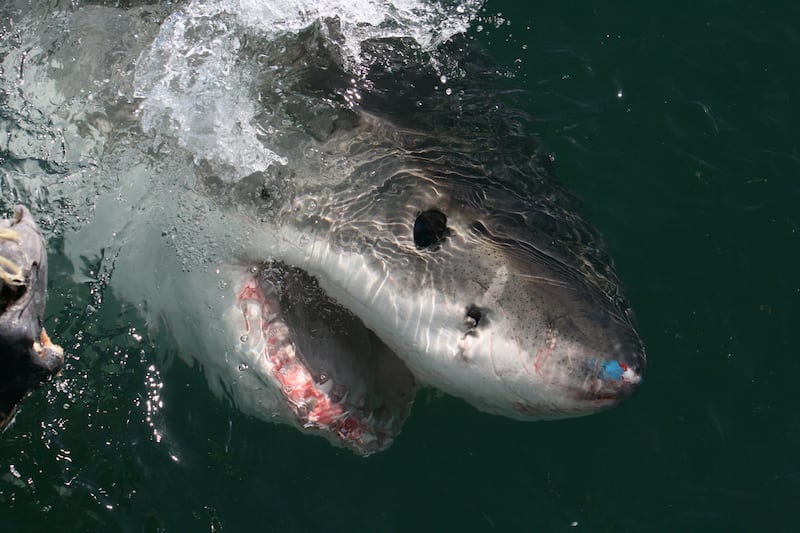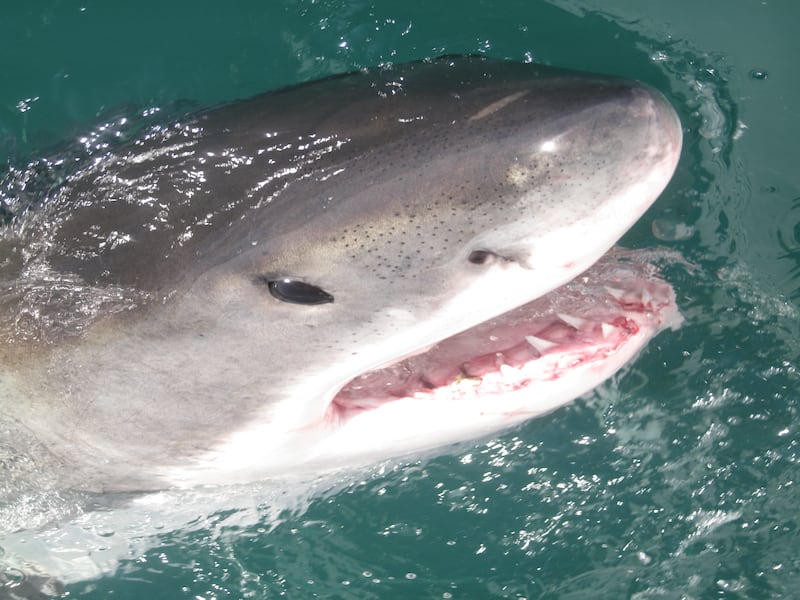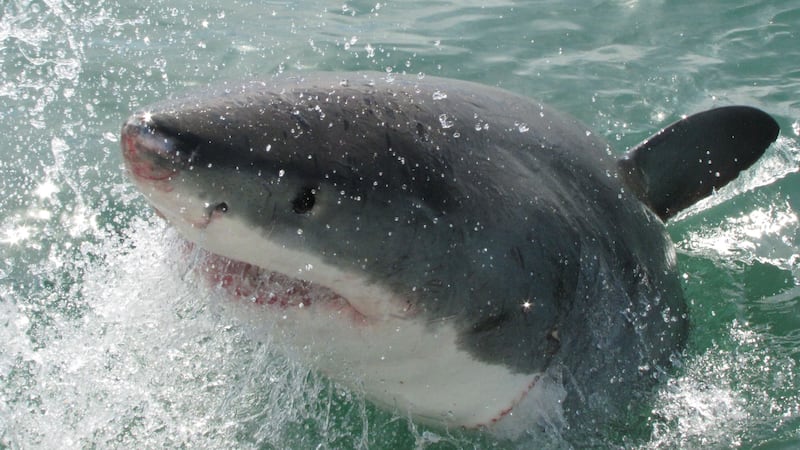Juvenile great white sharks use certain areas of the sea as “training grounds” where they can fine-tune their hunting skills and prepare for adulthood without facing competition from larger creatures, research suggests.
The study, published in the journal Environmental Biology of Fishes, is based on more than 3,000 shark sightings off the coast of Mossel Bay in South Africa.
The researchers said the bay offers a sheltered environment for the juvenile sharks and is home to different types of prey, in the form of fish and rays as well as seals and small whales.
The scientists said their work could help prevent the species from becoming extinct. They have been classed as “vulnerable” by the International Union for Conservation of Nature (IUCN).
Experts say very little is known about great white shark populations, although many believe that their numbers are falling.
Dr Nicholas Ray, a researcher in Nottingham Trent University’s School of Animal, Rural and Environmental Sciences, said: “Our findings could help protect specific habitats that these sharks utilise at different stages of their life.

“It might also bring about further legislation to support a vulnerable species at risk of extinction.”
The researchers studied the great white shark population at Mossel Bay to see how they used different habitats during various stages of their lives.
As the world’s largest known predatory fish, these sharks can weigh up to 1,100 kg and swallow their prey by ripping them into pieces, using about 300 teeth.
The team found more than four out of five (81%) great white sharks spotted at Mossel Bay were juveniles, measuring between 1.75m and 3m in length.
The researchers did not see any adults, which can grow up to 6.4m long, but spotted what they called “sub-adults”, measuring between 3.1m and 3.6m.
The creatures were more abundant when water visibility was more than three metres, which according to the experts, make for ideal hunting conditions.
They believe that juvenile great white sharks are using Mossel Bay as a place to learn how to hunt while avoiding competing with larger sharks.

Just 6.9% of great whites sighted were identified by the team as male, the researchers said, suggesting that females may also favour protected bays when they want to avoid mating harassment from males.
Dr Ray said: “Very little is known about great white populations and how these sharks use different habitats during their life stages.
“We know that these sharks have capacity for social learning, and the greater numbers of juveniles sighted throughout our study suggests that younger great whites have adopted this bay as a crucial nursery and potential training ground where they can learn to hunt in relative safety.
“It appears the sheltered conditions and abundance of food are ideal and serve to increase their growth and development and help them to avoid predation, competition and harassment from larger sharks.
“It would appear they’re using these waters to prepare for adulthood.”








